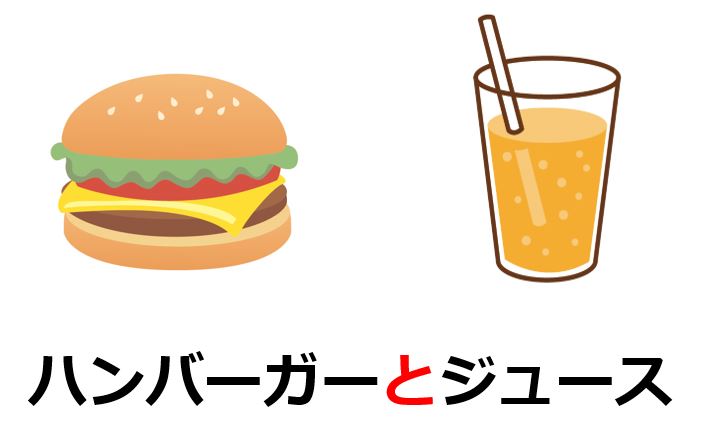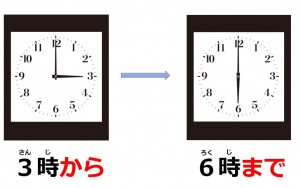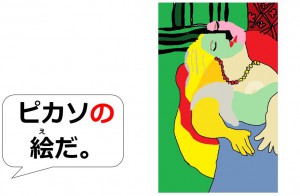Last time, you learned the functions of the particle から: Starting Point, Source, Raw Material, and State Before Change. So far, you have learned the usages of the particles assuming the number of subjects or objects is just one. In this lesson, you will learn expressions where there are more than one subject or object by using parallel markers: と, や, か, and とか.
Parallel Markers: と, や, か, and とか: Expressing “and” and “or”
| Table of Contents Parallel Marker と Parallel Marker や Parallel Marker か Parallel Marker とか |
Here, you will learn only parallel markers which can be used for nouns. This is the difference between Japanese and English. You can use “and” and “or” for any part of speech in English, but Japanese doesn’t allow you to do so. Regarding the ones for verbs, you will learn them in other sections.
Parallel Marker と: A and B (and nothing else)
| [私は / が] | リンゴとオレンジを | 食べる / 食べます |
| Topic/Subject | Objects | Verb |
| [I will] eat apples and oranges (and nothing else). | ||
The function is to list nouns which have similar meanings or are of similar types. The point here is that と indicates you have listed everything. Here are more examples.
| ひらがなとカタカナは簡単(だ / です)。 Hiragana and Katakana are easy. |
| 田中さんと山本さんは英語を勉強(する / します)。 Tanaka-san and Yamamoto-san will study English. |
| 学校と図書館で本を(読む / 読みます)。 [I will] read books at school and the library. |
If you would like to list more than two nouns, you continue to add と between additional nouns.
| 私と田中さんと山本さんは英語を勉強(する / します)。 |
Some people prefer to replace the second (and the third, if any more) と with “、”, though both of the expressions are natural. This is applicable for other parallel markers, too.
| 私と田中さん、山本さんは英語を勉強(する / します)。 |
Parallel Marker や: A and B (and something else)
| [私は / が] | 靴や帽子を | 買う / 買います |
| Topic/Subject | Objects | Verb |
| [I will] buy shoes and a hat (and something else). | ||
The function is to express “and.” The difference between と and や is that や doesn’t list everything, that is to say, there has to be something unlisted. Here are more examples.
| 教科書や辞書は必要(だ / です)。 Textbooks and dictionaries (and something else) are necessary. |
| ケンやシンジはバスケットボールが好き(だ / です)。 As for Ken and Shinji (and someone else) , basketball is the one they like. |
| フルーツやデザートを(買う / 買います)。 [I will] buy fruits and dessert (and something else). |
If you would like to emphasize the existence of unlisted things, you can attach など with the last noun. That sounds slightly more formal.
| 大学で法律や歴史などを勉強します。 [I will] study law, history, etc. at the university. |
[adsense]
Parallel Marker か: A or B
| [私は / が] | 英語かイタリア語を | 始める / 始めます |
| Topic/Subject | Object | Verb |
| [I will] start [learning] English or Italian. | ||
The function is to express one of the two (or more) like “or.” In the above example, you will start learning ONLY English or Italian. Here are more examples.
| 京都か大阪に(行く / 行きます)。 [I will] go to Kyoto or Osaka. |
| 川か海で(泳ぐ / 泳ぎます)。 [I will] swim in the river or the sea. |
| 私か姉が(歌う / 歌います)。 I or my elder sister will sing songs. |
か is sometimes placed after the last noun, though there is no difference.
| 京都か大阪かに(行く / 行きます)。 |
| 川か海かで(泳ぐ / 泳ぎます)。 |
| 私か姉かが(歌う / 歌います)。 |
Parallel Marker とか
| 寿司とか天ぷらとか | 日本食は | 美味しい(です) |
| Example | Topic/Subject | Predicate |
| Japanese cuisine like Sushi and Tempura are delicious. | ||
The function is to list examples. This can roughly be translated as “things like A and B.” The concept is similar to や, which leaves something unlisted. However, や is more formal than とか.
| サッカーとか野球とかスポーツを(する / します)。 [I will] play sport like soccer and baseball. |
| 5時とか6時とか朝に勉強(する / します)。 [I will] study at times in the morning like 5am and 6am. |
You can use とか just like や. The meaning is almost same, but とか is used with more colloquial expressions.
| 塩とか砂糖を(買う / 買います)。 [I will] buy [things] like salt and sugar. |
| 公園とか駅で(歌う / 歌います)。 [I will] sing songs at [places] like parks and stations. |
Advanced Topic: Practical Usage
This is often heard in conversation in order to show examples. For instance, if someone says “I want to eat something delicious,” you can reply “寿司とか (like Sushi)?” The following sentence patterns are ones you will learn later, but briefly check how とか works.
| 海とか(行かない / 行きませんか)? Won’t you go [somewhere] like the sea [with me]? |
| 山とかどう(ですか)? What about [somewhere] like mountains? |
| 山は富士山とか(ですか)? As for mountains, is it Mt. Fuji (or any other ones)? |
Summary
- と can express A and B (and nothing else)
- や can express A and B (and something else)
- か can express A or B
- とか can list examples: Things like A and B
Although we have mentioned some usages in the advanced topic section, you don’t have to memorize them right now. All you need to know is what we have summarized above. Now, you can express various things with plural subjects and objects. Next, you will learn the particle の, which means you will almost complete Japanese particles. Great job!





